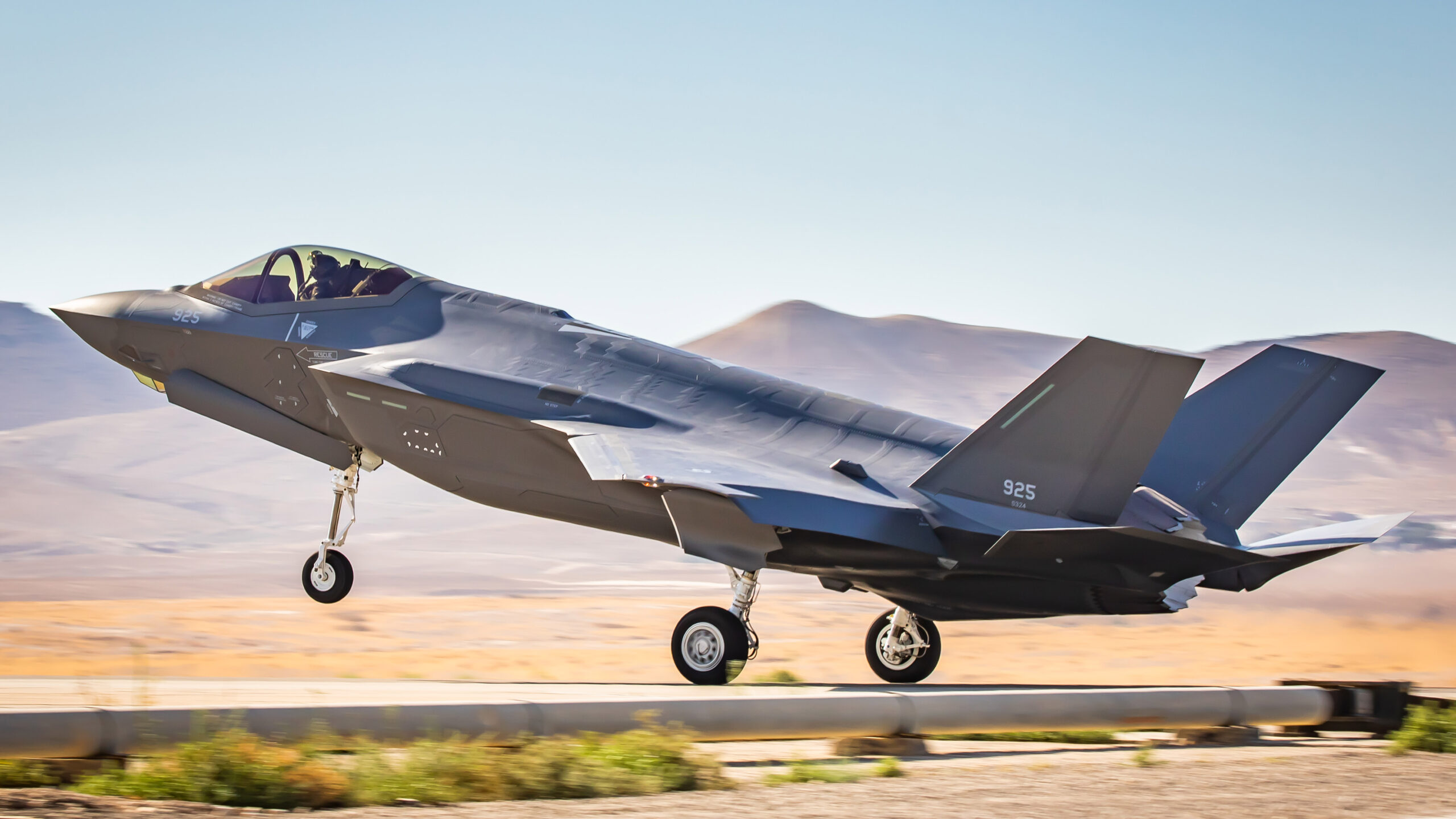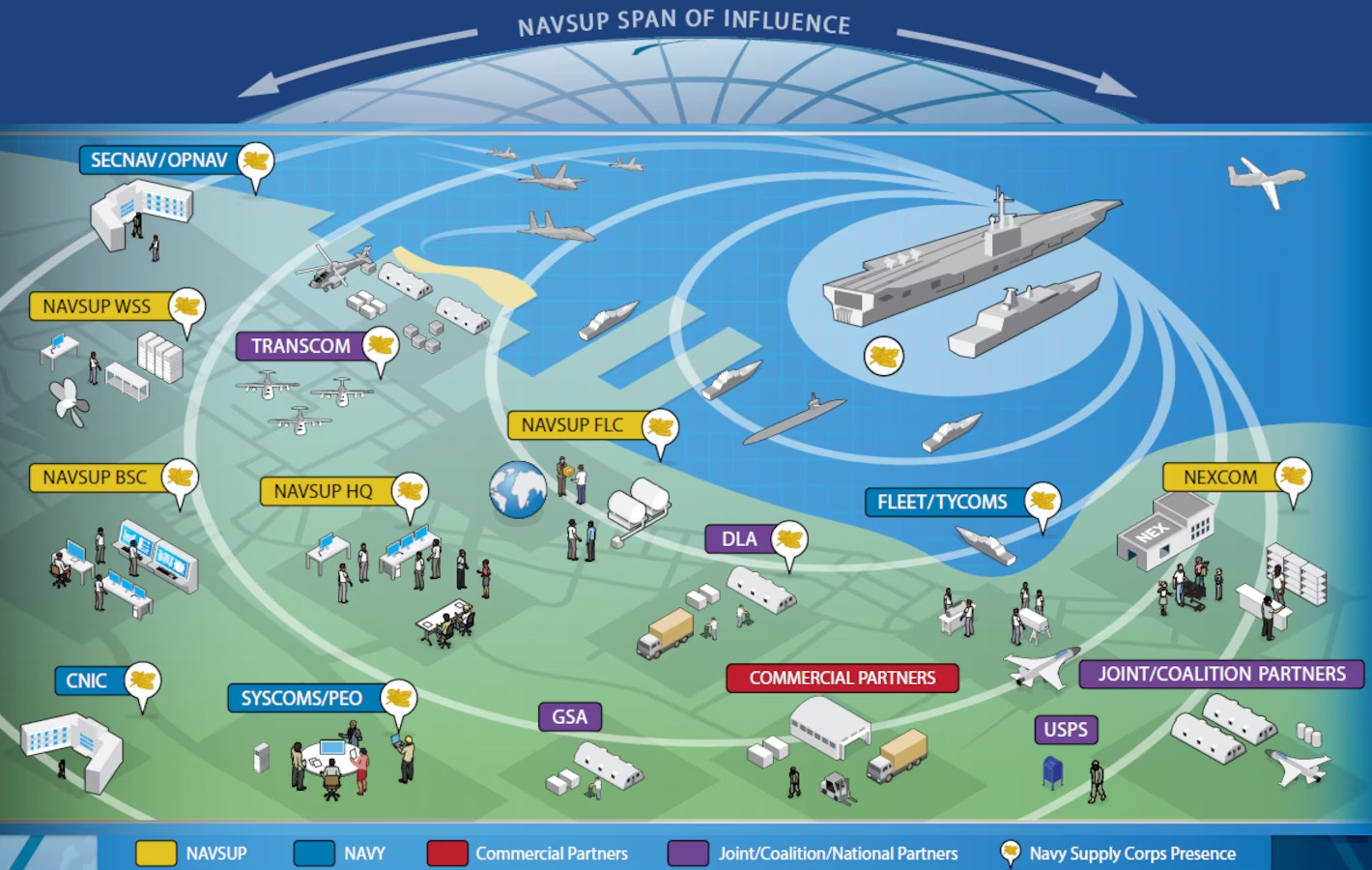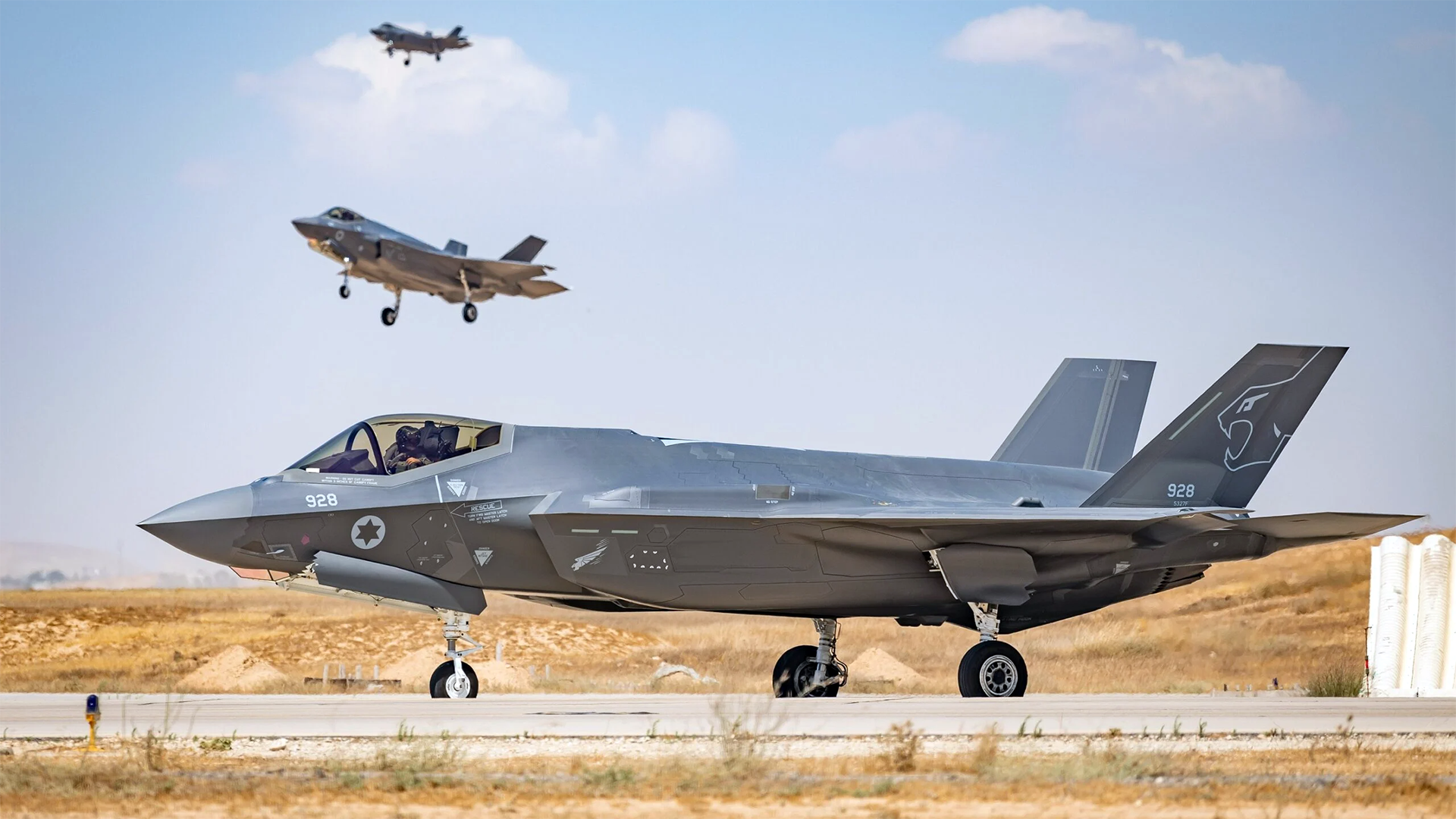Israel’s ability to sustain its fleet of F-35I Adir stealth fighters during combat operations against Hamas is providing important lessons for the United States, especially in terms of potentially fighting a conflict the Pacific, Pentagon officials said during testimony before Congress Tuesday.
U.S. military’s concerns over sustaining its F-35 Joint Strike Fighters through the so-called ‘just-in-time’ logistics model that underpins the program, especially during a time of war, have risen dramatically as we noted in April. Overall, U.S. F-35s still struggle in terms of readiness, with about 55 percent of F-35s operated by the Air Force, Marines and Navy able to perform at least one of their assigned missions as of March, a report that the Government Accountability Office (GAO) also released on Tuesday states.
The news out of Israel stands in contrast to those issues. It highlights enhanced U.S. support, but also Israel’s initiative to create its own sustainment and aircraft improvement system that has enabled it to avoid problems experienced by the American military.

The Adir’s performance in Israel is “absolutely outstanding,” Air Force Lt Gen. Michael Schmidt, Program Executive Officer and Director of the F-35 Lightning II Program, testified before a House Armed Services Committee subcommittee. ”Their mission-capable rates are high. Their full mission capable rates are high.”

Schmidt didn’t offer specific numbers, but added that the Israeli Air Force (IAF) is “very satisfied with what their performance from a sustainment enterprise is giving them. I think we could learn a lot from them in terms of the quickness with which they’re turning airplanes.” The reference here to ‘turning airplanes’ is about recovering and resetting jets and then launching new sorties. Those lessons are in addition to “all of the things we’re learning ourselves with moving parts around the world in support of a conflict,” he added.
One reason for the IAF’s success with the Adirs is that the U.S. government has surged spare parts and other support capacity to Israel, U.S. Rep. Rob Wittman (R-VA), Chairman of the Tactical Air and Land Forces Subcommittee, said in his opening remarks.
“The F-35 joint program office has moved at a breakneck speed to support our closest partner and ally in the Middle East, Israel. They’ve done this by accelerating F-35 weapons capabilities and increasing spare parts supply rates in their fight against the atrocities committed by Hamas,” he said.

“We have added some capabilities to that airplane in a very short period of time,” Schmidt said of U.S. assistance to Israel’s F-35I program. “And, and our team is doing everything we can to to to continue to move the ball forward there, sir.”
He did not elaborate on what capabilities, but said the overall effort has proven to be a great test of U.S. long-range sustainment capabilities for the F-35.
“As we’ve seen in recent months, the F-35’s global sustainment infrastructure, and the platform itself, are being tested through current conflict in Israel,” he said in his written testimony. Since the war broke out on Oct. 7, “U.S. government and industry personnel have worked together to meet emerging Israeli requirements. From operational and technical perspectives, our aircraft and global supply system are proving resilient.”
William LaPlante, Under Secretary of Defense for Acquisition and Sustainment, offered similar sentiments.
“Notably in Israel, we see surging sustainment support in operations that maximizes fleet readiness with 35 of 39 Israeli Air Force F-35A aircraft and exceeds expectations in combat,” he said in his written statement. “In many ways, this cooperative program exemplifies best practices for incorporating allies and partners at every phase of defense planning.”
LaPlante lauded Schmidt’s ability to rapidly field mission data files, packages of information loaded onto F-35s before each flight.
“What General Schmidt and his team did, in about a week – week-and-a-half – is turned around these mission data files. That’s the brick that goes into the airplane. And that I think the lessons learned on how you did that can apply all the way around the world.”
Both Schmidt and LaPlante said lessons learned by these high-tempo Israeli F-35 operations will be especially important in preparing for a fight in the Pacific, where the ability to sustain the notoriously support-intensive F-35s in a vast and contested theater will be a major challenge. The ‘just-in-time’ logistics strategy and the cloud computing hub that is the foundation for F-35 logistics are of especially high concern. While those systems may be adequate for peacetime operations — and even that is highly debatable — during a time of conflict, relying on them could leave F-35s stranded on the ground.
Those lessons are in addition to the Pentagon’s own review of its long-distance F-35 logistics operations.
“We’ve been doing sustainment tabletop exercises, assuming a contested environment, particularly one in the Indo-Pacific and we’re learning a lot,” said LaPlante.

During a panel discussion at the Navy League’s annual Sea-Air-Space conference, and exhibition in April, Schmidt raised his specific concerns about the just-in-time concept in a contested environment. From our story at the time:
“This program was set up to be very efficient… [a] just-in-time kind of supply chain. I’m not sure that that works always in a contested environment,” Lt. Gen. Schmidt said. “And when you get a just-in-time mentality, which I think is it’s kind of a business model in the commercial industry that works very well in terms of keeping costs down and those kinds of things, it introduces a lot of risk operationally.”
“The biggest risk is that F-35 units have little in terms of spare parts on the shelf to keep their aircraft flying for any sustained amount of time.“

In an October interview with The War Zone editor-in-chief Tyler Rogoway, Scott “Intake” Kartvedt, the first commanding officer of a Navy F-35 squadron, explained some of the challenges of such far-flung logistics:
“I’m not sure how much better it got, but I can tell you the challenges that we faced back, logistically specifically, it was designed to be maintenance on demand, essentially. So the aircraft could relay a message to the supply warehouse and say, this part is getting ready to fail. And then Lockheed could send that part out to the base and it could be replaced, rather than having to have large warehouses full of supply parts, not knowing which was gonna fail and what you might need. You take that into the maritime service and the challenge, Tyler, is that you can’t logistically operate that way because we could have a ship, in this case, off the coast of Taiwan that needs a part, and Lockheed Martin can guarantee its arrival into Okinawa. But now there is no FedEx, UPS, DHL that’s gonna get it out to the aircraft carrier. So it stops and now you have a delay and it has to go get picked up and the aircraft might be down. I don’t know if they have resolved that challenge…”

In addition to being supplied by the U.S. with a surge in spare parts and other items, Israel enjoys an advantage with its F-35 fleet no one else has. It’s developed its own additional sustainment and upgrade system and is the only partner that can test modifications and deploy them, including to the jet’s software, on its own. The IAF even has its own specially configured test F-35 to assist in these efforts.

The IAF realized early on that a troubled U.S. centralized support structure for the jets – a centralized cloud-based ‘computer brain’ called the Autonomic Logistics Information System (ALIS) – wouldn’t meet its needs, especially during a large-scale conflict.
ALIS proved to be riddled with issues, exacerbating maintenance and logistics backlogs. It also turned out to be so intrusive in what data it collects that many foreign operators took steps to firewall off portions of their other networks from it.
The F-35 JPO ultimately decided to abandon efforts to fix the system in favor of a completely reworked architecture called the Operational Data Integrated Network (ODIN). That replacement system is still in development.
Even before the inception of ODIN, Israeli officials negotiated a unique arrangement giving them a degree of independence from the rest of the program.
From our story about concerns over spare F-35 parts:
The F-35Is have a distinct configuration that is importantly not dependent on ALIS. On top of that, it is the only user of the F-35 to have the authority to install entire suites of additional domestically-developed software on its jets and to perform completely independent depot-level maintenance.“
“The ingenious, automated ALIS system that Lockheed Martin has built will be very efficient and cost-effective,” an anonymous Israeli Air Force officer told Defense News in 2016. “But the only downfall is that it was built for countries that don’t have missiles falling on them.”
Israel has further leveraged its unique position as an F-35 operator to expand its own organic research and development and test and evaluation capacities. The country also looks to be moving toward expanding its support depot infrastructure. Yesterday, Lockheed Martin was awarded a modification to an existing contract award, worth approximately $17.8 million, specifically to “provide a depot maintenance activation plan in support of establishing initial depot capability for the F-35 air vehicle for the Government of Israel.”
Israel’s F-35 sustainment model might not be fully transferable to the U.S. The IAF operates a small fraction of these aircraft compared to the three American service branches that fly them. It’s combat operations also take place far closer to home bases than what is envisioned for a U.S. fight in the Pacific. Beyond that, surging spares to support dozens of F-35s during high tempo operations will not be possible for many hundreds that the U.S. and its allies would be putting to work in a major crisis. There is a major lack of spare parts within the F-35 ecosystem as it is, so the Israel case does serve as an example of what readiness can look like if the parts needed to support the fleet during wartime were actually available.
Israel’s experience, however, doe offer, as was previously pointed out: “an important example of how things might be structured differently and that it can be done. If nothing else, the drivers behind the IAF’s push for independence from the broader F-35 program all speak directly to many of the issues that Lt. Gen. Schmidt and others are just starting to raise more publicly now.”
Thanks to U.S. support and its own foresight the IAF is operating F-35s at a tempo far higher than the U.S. can manage. Whether the U.S. can adapt lessons learned at scale from how Israel uses the Adirs in its fight against Hamas, and the funds needed to actually make that reality, remains to be seen.
Contact the author: howard@thewarzone.com
